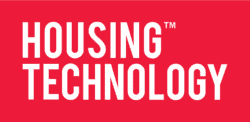At the Housing Technology 2015 conference, a common theme throughout almost every single presentation, and indeed the IT leaders’ panel discussion, was the difficulty of either integrating different applications (even those from the same supplier) and/or transferring data easily between them.
Regardless of whether people were talking about messaging, APIs, integration, data transfer, data migration, straight-through processing, or even omni-channel delivery, the big problem is the lack of any consistent and common means of moving data between applications without coming up against hurdles in the forms of (variously) costs, staff resources, time, manual processing, and errors and duplications, to name just a few.
Those readers with good memories may remember that we set up what was known as the Housing Technology Standards Board in 2008/9, with the support of around 50 housing providers and IT suppliers. The full stories are available here.
In light of what was said at the 2015 conference, it’s worth revisiting a precis of what the Housing Technology Standards Board was trying to do:
- To create open, independent and application-neutral standards and structures for data transfer between disparate IT and business applications/services (e.g. the iCal/vCal standard for calendars);
- To ensure that the standards cover as wide a range of processes as possible without diluting the core aims or becoming too complex or specific;
- To encourage and educate end-user organisations (i.e. HAs and RSLs) in the merits of adopting and enforcing these standards, with support and endorsement from industry bodies;
- To use the standards as a means of improving IS quality and making consequent improvements in tenant services, internal decision-making, supplier communications and external reporting;
- To improve the procurement process for end-user organisations, external contractors and technology suppliers;
- To use the standards to inform purchasing decisions for best-of-breed applications;
- To make it easier, cheaper and faster to switch IT applications and services, thereby increasing choice and reducing supplier lock-in;
- To reduce initial implementation costs and ongoing running costs;
- To encourage the adoption of minimum requirements in tender/RFP documents, such as the supplier’s database and interface schemas and their adherence to HTS v1.0.
Looking back with benefit of hindsight, the standards board was probably too much, too soon. But now with the widespread use by both housing providers and IT suppliers of, for example, web services, cloud computing and the various software-, platform- and infrastructure-as-a-service (XaaS) models, the concept of developing some common messaging standards has a good chance of becoming a reality.
With that in mind, Housing Technology would like to put itself forward to act as an IT-neutral ‘clearing house’ representing the interests of housing providers and IT suppliers, with the aim of being the catalyst for a critical mass of support for some IT messaging standards in the housing sector.
If you would like to voice your opinion on this subject or express an interest in actively contributing to the creation of some IT standards, please contact us via standards@housing-technology.com.

